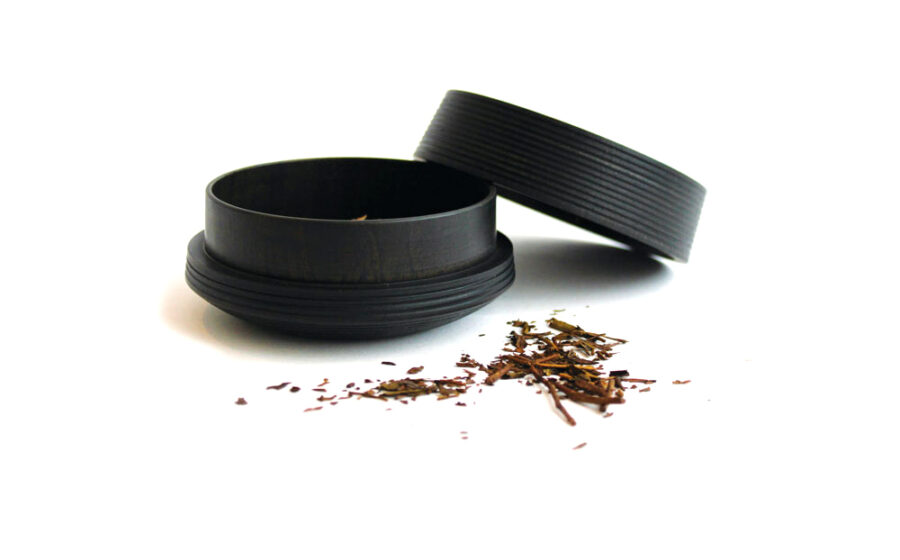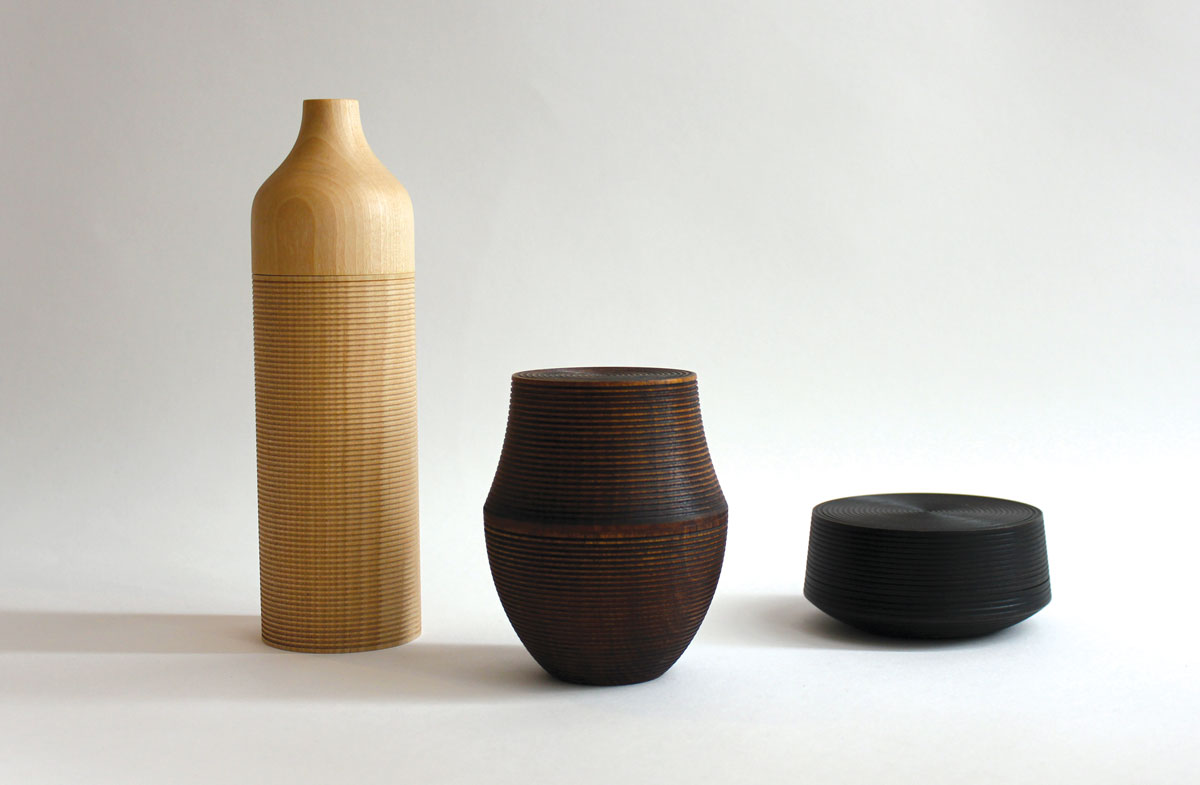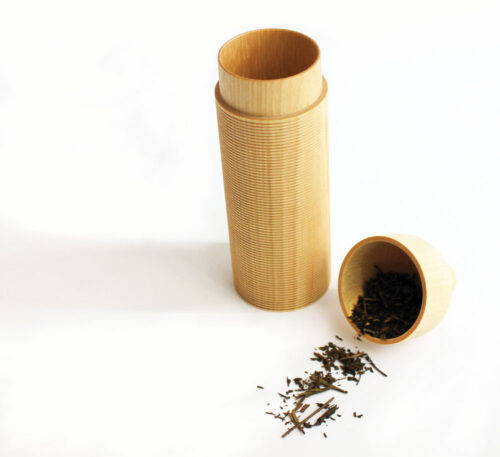[W]hen patience is practiced, the result is often magnificent. Think of slowly roasted meals lingering in the oven for hours on end or herbs drying for weeks hung by their stems from a ceiling beam. While instantaneous expectations flow throughout our culture, it’s essential that we learn to celebrate, even crave, the patience that imbues our traditions with richness and quality. The practice of tea speaks to the concept of thoughtfully moving through a ritual that cannot be rushed. It begins by growing the tea leaves, harvesting them at a particular moment, processing the leaves in a specific way, storing them properly, heating the water to a certain temperature, steeping the leaves for an exact amount of time, and slowly sipping the tea. Within this sequence we often overlook the practice of storing the leaves. When the leaves are at rest it matters where they rest. The way in which tea leaves are stored is crucial to maintain freshness. Humidity, light, and exposure to strong aromatics can greatly harm the leaves and alter their nurtured nuances.
Crafting vessels to consciously care for tea is a centuries-old art. A beautiful example is the traditional Japanese Yamanaka lacquerware that originated in the Tensho Period (1573–1592), when woodworkers settled in Yamanaka and developed a unique technique of cutting wood vertically to offer durability and showcase the beauty of the wood grain striations. Practicing this specific style of woodworking, Gato Woodwork was established in 1908 in Yamanaka. Third-generation craftsmen Akio and Nobuo later grew the business, updated the name to Gato Mikio Company (Mikio being their father), and developed an original line of wood crafts highlighting wood grain. The brothers made their mark with a focus on lacquered trays, confectionery bowls, and saucers that featured prominent wood grain. Akio’s son, Masayuki Gato, would evolve the brand further, handcrafting products under the name Syosen, derived from a different reading of the first kanji characters in both Akio and Nobuo’s names.
In a natural finish, chestnut brown, and a night-sky black, the canisters each have their own personality, though their synergy can be hypnotizing.
Striking a balance between traditional artisans and modern product designers, Masayuki created a new, collaborative style known as mountain lacquerware, based on seventeenth century haiku master Bashō’s principle of “fluidity and immutability.” This poetic sense of style that balances a respect for traditional lacquerware techniques while maintaining a nod to the fluidity of modern design is what led to the creation of Karmi tea canisters in 2010.
I can still recall the moment I was first drawn to the Karmi collection. Moments after wandering into Rikumo, a Philadelphia-based retailer of luxury lifestyle goods from Japan, I was struck by the canisters’ simple beauty; light to the touch, but possessing an energy that seemed weighted in tradition. At the store, a quiet and calming space, the Karmi tea canisters were positioned on a wooden tiered center display as though they were honorable trophies waiting to be awarded to a tea connoisseur.
In a natural finish, chestnut brown, and a night-sky black, the canisters each have their own personality, though their synergy can be hypnotizing. Japanese cherry birch wood has been and continues to be the only timber used as the raw material for the canisters, because it resists deformation and is easy to lathe and treat. Beyond form alone, the wood grain pattern of the cherry birch isn’t dominant, allowing the hand-carved striped grooves to be the aesthetic focus of the collection. Rooted in seasonality, the artisans purchase the cherry birch timber at the market from autumn until the rainy season in early June (as the intense moisture spoils the wood), after which the wood undergoes a three-month-long drying process before milling begins. Masayuki says, “With the tea canisters, it’s extremely important that the wood be dried gradually because the precision fit of the lid and body is essential. We implement our precision by carefully milling in a perfect circle. Even with these precautions, though, the wood sometimes gets out of control.” The lengthy process allows excess moisture to evaporate but not for the wood to become overly dry, thus making the canister the ideal vessel for keeping tea leaves fresh.
The dried timber is then precisely thinned and curved with a woodturning lathe to create the shape of the canister and then decorated with sharp grooves by hand. As I ran my fingers across the grooves, I tried to imagine the precise motion circling each canister; the hand steadily and gracefully turning like a slow pirouette in a ballet. The grooves, although beautiful, were designed to ensure that the canister could be held in one hand and not slip, fall, and spill the precious contents. Once the grooves have been artfully carved each piece undergoes a careful lacquering process. The pieces are rubbed with transparent lacquer, excess is wiped off, and it is allowed to dry. That process is repeated five to ten times. This technique is again based in both design and function. The lacquer strengthens the wood grain, allowing the artisan to decide when the canister lid feels as if it is truly airtight for the purpose of maintaining the freshness of the leaves. Beyond function, the artisan layers supremely thin coats of lacquer to allow the beauty of the vertically cut wood grain to show through. The entire process takes almost one year to complete, reliant upon a natural cycle and calling on history, form, beauty, and function.
The notion of defining them as “canisters” doesn’t seem to capture the integrity of these pieces, as they truly need a term that encourages one to treasure their history and handcrafted journey. These heirloom artifacts carry meaning while masterfully caring for tea leaves. The thoughtful process of carefully treating the wood means that tea leaves will barely be affected by the heat and humidity in the air. The lathing needed to create the curvature of the lid and mindful lacquering ensures an airtight seal that you can feel as the pressure changes when you remove the lid. Restraint in technique is contrasted by free-flowing nature and the wait for cherry birch trees to grow and dry. This balanced energy is mirrored in the process of the tea ritual: waiting for leaves to be harvested at the proper time, naturally treated to allow their essence to shine, and then steeped with restraint (an emphasis on water temperature and steep time).
From the moment that Gato Mikio began to craft Karmi tea canisters they have received awards. The Japanese Good Design Award came in 2010, Frankfurt’s Design Plus award in 2011, and Designpreis Deutschland Silver Award in 2012. One can understand the deserved accolades simply by peering at each of the fourteen unique designs that makeup the Karmi canister collection. Ranging from elegantly tall and slender to short and robustly round, each canister typically holds fifty to one hundred grams of tea, and some of the lids double as a measuring cup with measurements noted within. Three models (the Tawara, Toku, and Kama) are specifically designed with matcha in mind. In addition to a handcrafted base and lid, each of these contain a second inner lid to provide an additional seal for the prized, ceremonial green tea powder. Designed to respect varying cultural aesthetics, the containers reflect Japanese minimalism (seen in the Moto, Taru, and Sane models), Asian aesthetic (Bou and Bin), and a European design sense with the slender models (Tou, Kubi, and Hishi). Rooted in both form and function, the span of designs allows a tea connoisseur to build a collection with the notion that only one type of tea should be stored in each canister to preserve the integrity of the pure tea.
While the containers achieve a certain perfection at the outset, they don’t reach their ideal state until much later. The finishes were purposefully selected to be harmonious with modern lifestyles and living spaces, the lacquer intended to gradually grow more transparent as it comes in contact with air over time. In essence, the canisters were consciously lacquered to evolve and grow within one’s home. Threaded with the notion of patience and appreciating the passing of time, this intentional design element seems to connect with the Japanese idiom ichi-go ichi-e. Translated to “one time, one meeting” it describes the idea that we must treasure every moment as they are not repeated. Each time we reach for the hand-carved canister we must realize that a special moment is occurring as the lacquer ages and as we brew the tea tucked inside.
—Story and photos by Alexis Siemons, tea writer and consultant. She writes about her steeped adventures at teaspoonsandpetals.com.



















